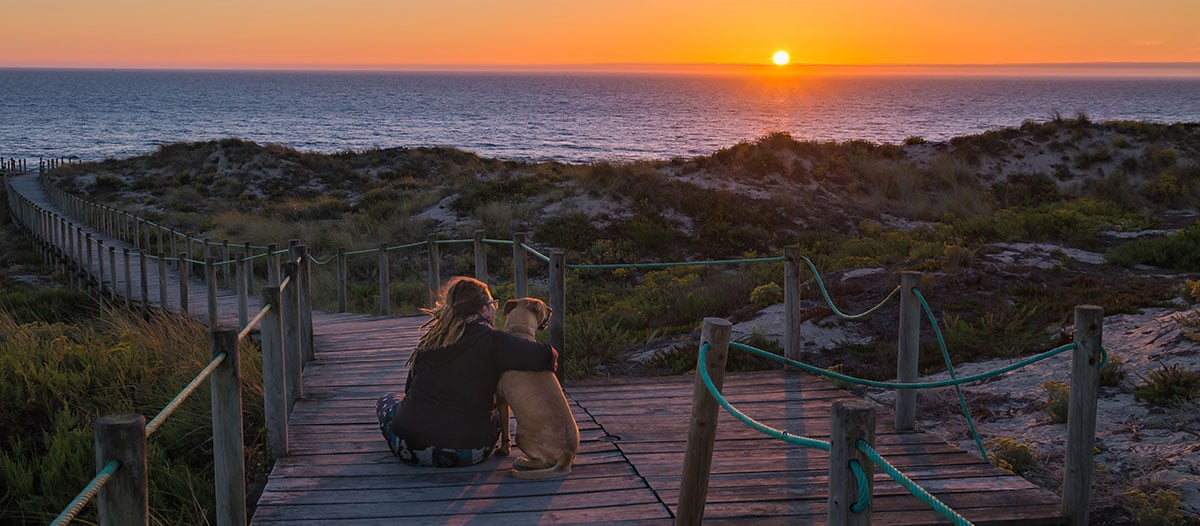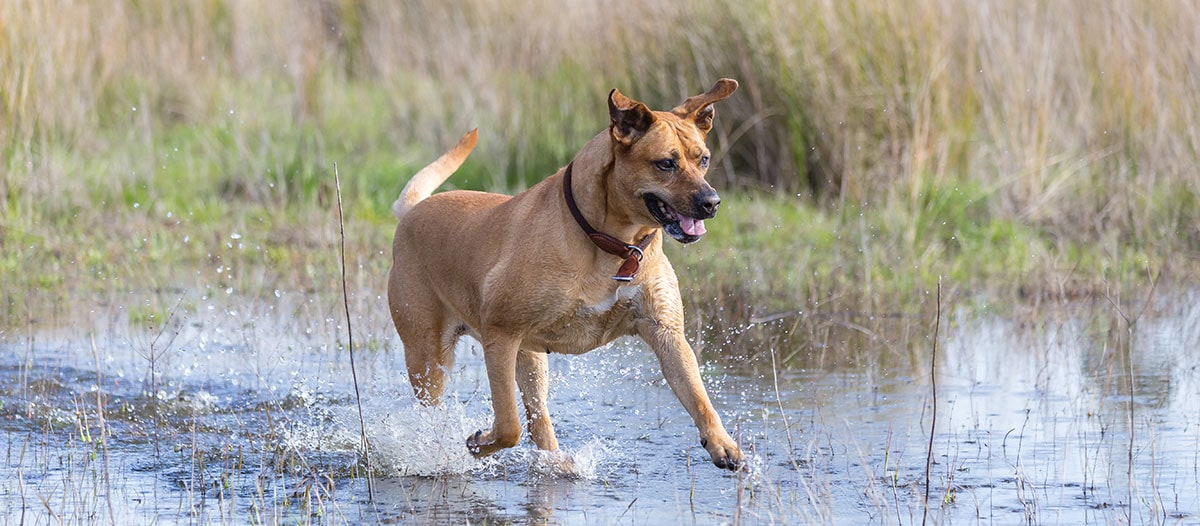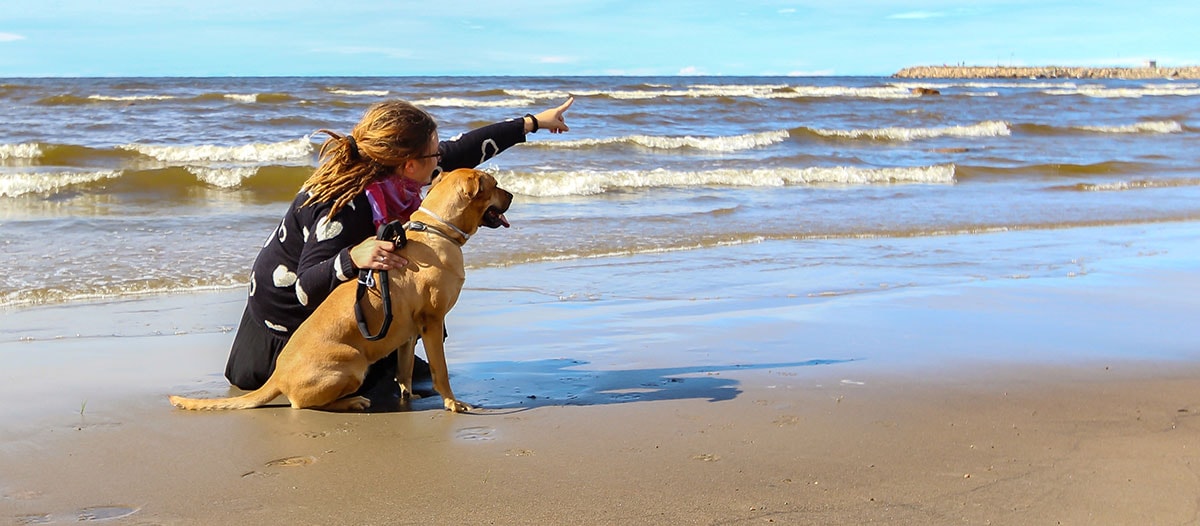Camping with your dog: a guide for the perfect holiday
4 October, 2018
Our guest bloggers Robby and Stefan are known from their blog Campofant and for Eurocampings they put together a guide for the perfect holiday with your dog.
For dog owners in particular, camping is the ideal way to spend the best time of the year without stress. In this guide for the perfect holiday with your dog you will find everything you need to know about camping with a canine.
Where are you headed?
Before you pack your things, you should of course think about where you want to spend your holiday. Since you want to take your four-legged friend with you, you should consider a few things beforehand:
- Entry requirements for dogs of certain breeds
If you have a dog that is considered a “fighting dog” in some countries, then you should inform yourself about the entry regulations beforehand. Dogs of these breeds are not welcome everywhere and there are often general entry bans. - What will the weather be like?
In southern countries in particular, it can get really hot in summer. That can be quite hard on us humans, and it can be especially hard on pets. So if you have a dog that is already very old or sick, think about which climate is pleasant for you as well as for your companion. - How far do you want to travel?
There are dogs who don’t mind riding in a car. In fact, they love it. But there are also those who would like to get out of the car minutes after getting in. Adjust the route accordingly and make sure to take regular breaks.
Once you have decided on your destination, you can get going. Well, almost…
Mediterranean sicknesses and more
If you want to travel to southern countries such as Italy, Spain, France, Portugal, etc., you should inform yourself in advance about Mediterranean diseases and take appropriate precautions. Sand flies can transmit leishmaniasis and many other diseases that are often not completely curable. Heartworms are also problematic in these countries. It is best to check with your vet in advance what preventive measures he or she can recommend for a trip to these countries.
Vaccinations and tapeworm treatment
Apart from the entry regulations concerning the dog breed, certain vaccinations are also required. These are documented by the veterinarian in your pet passport, which must be shown abroad on request. If an important vaccination is missing, it can happen that your dog has to be put into quarantine there.
Norway, for example, is one of the countries that requires a tapeworm treatment documented in the pet passport. Your veterinarian can also advise you about this.
Securing the dog correctly in the vehicle
Of course, during the journey the dog should be properly secured in the car or motorhome. By the way, a pet counts as cargo when it is carried in a vehicle. Securing with a dog box or a seat belt are probably the most common variants. Some pets feel more comfortable in a box so that they cannot see what is going on outside. Others, however, like to look out of the window while travelling.
We would recommend securing your dog in a dog box, as ADAC (the General German Automobile Club) found in a crash test that standard seat belts do not provide sufficient protection in the event of an impact.
No matter which type of protection you choose, be sure to check the ECE R17, ECE R 126 or DIN 75410-2 marking when you buy. This indicates that the product has been tested in a crash test procedure.
Dog-friendly campsites
Dogs are allowed on many campsites, but this does not necessarily mean that they are welcome. Often the pitches are divided into two different areas – one for dog owners, the other for those who do not have a four-legged friend.
But how can I tell that a campsite is actually dog-friendly?
- Reviews
What reviews are there from other dog owners? This can often tell you whether you and your four-legged friend are really welcome and nothing stands in the way of a perfect holiday. - Dog-friendly facilities
On a genuinely dog-friendly campsite you will find great bathing and playing facilities for your four-legged friend. Dog showers and large playgrounds are not uncommon and are not only fun for our partner on four paws. - The perfect surroundings
Ideally, the campsite should be located somewhere in the countryside, where there are plenty of opportunities for long walks in the surrounding area. This is why you should take a closer look not only at the campsite itself, but also at its location.
For us personally the costs for the dog are a negligible factor, as long as everything else is as it should be. Particularly in summer, it is important for dogs to be able to swim so that they can cool down. And we don’t want to have to leave our puppy behind by the car while we sunbathe on the shore or beach.
Correct behaviour with a dog on a campsite
The journey is over and you have arrived at your holiday destination. Normally you get the campsite’s rules of conduct, which also contain information on pets, pressed into your hands when you check in. It is often compulsory to use a leash, which makes sense. Not every camper has a thing for dogs and not every dog is happy about a member of the same species storming towards him or her.
So you should stick to these regulations in order to make peaceful coexistence possible. If there is a lawn for pets on site, then your pet will surely find a few other playful dog partners there so they can romp to their hearts’ content.
For time spent at the camper or tent, you should secure your dog to the vehicle using a ground anchor or peg, which can be fastened under the tyre or simply screwed into the ground.
Tip: If you attach your dog with a long leash, you should use a harness and not a collar to prevent damage to the cervical area.
Many dog owners have a perimeter fence with them. This fence is placed around the pitch and offers the dog some space in his own area to be able to move without a leash. Some dog-friendly campsites also offer pre-enclosed pitches.
Camping with your dog in the summer
If you go camping in summer, this can be a challenge for you and your four-legged friend. However, there are a few preparations you may want to make to ensure that the hot temperatures are as comfortable as possible for your furry friend:
| Shady pitch | At the campsite, make sure that your dog has a chance to lie in the shade. This can be from surrounding trees, but a small beach tent can also be helpful. My dog likes to lie under our motorhome, because it is by far the coolest spot she can find. |
| Cooling matt | We bought a cooling mat. This is filled with a gel, which has a cooling effect when pressed. When our dog is not lying on it, I personally find it very pleasant as well! |
| Possibility to swim | Bathing opportunities directly at the campsite or in the immediate vicinity would be ideal. For the water rats among our four-legged friends, this is definitely a blessing, and more water-shy pets might at least venture a footbath. |
| Damp cloth | A damp cloth, which you lay over your dog, can also provide a little cooling. However, not every dog likes this. If in doubt, just try it out to see if it’s comfortable for your companion. |
| Drinking water | Although it is self-evident, I will mention it anyway. Your dog should always have enough fresh drinking water available. |
| Hot asphalt or sand | When the sun is really burning, the asphalt can heat up considerably. The best thing to do before taking a walk is to feel with the palm of your hand whether it is already too hot. There is a danger that your dog will burn his pads. The sand on the beach can also get quite hot. |
| Walks | During the heat you should only take your dog out for a short time so that he can do his business. Long walks should be taken in the cooler hours of early morning or late evening. |
| Heat in the vehicle | When the sun burns on your vehicle, it can get extremely hot inside in no time at all. Don’t leave your four-legged friend alone and unattended while you go on a trip if you don’t have air conditioning. |
As you can see, camping with a dog is a great experience for everyone involved. I love to travel with my lady dog, she is always so full of anticipation as soon as I start the engine and she knows that we are finally off camping again.
Your ideal camping checklist
You learn the hard way. That’s also true for camping. If you take a critical look at everything you packed when you get home, and make a mental list of everything you actually used, that’ll be really handy for your next holiday. Download our handy camping checklist here!
Do you have any tips to share? If so, please write a comment below.













Latest comments